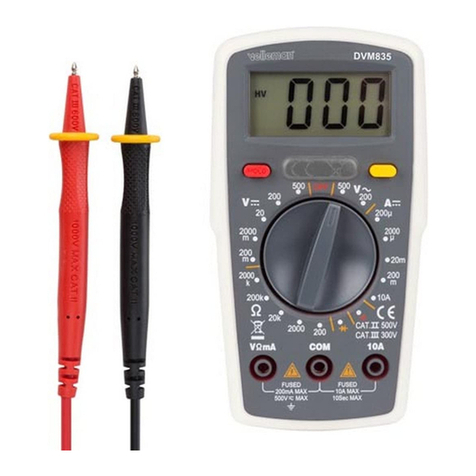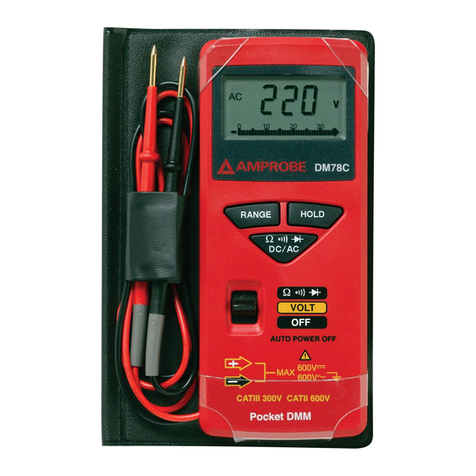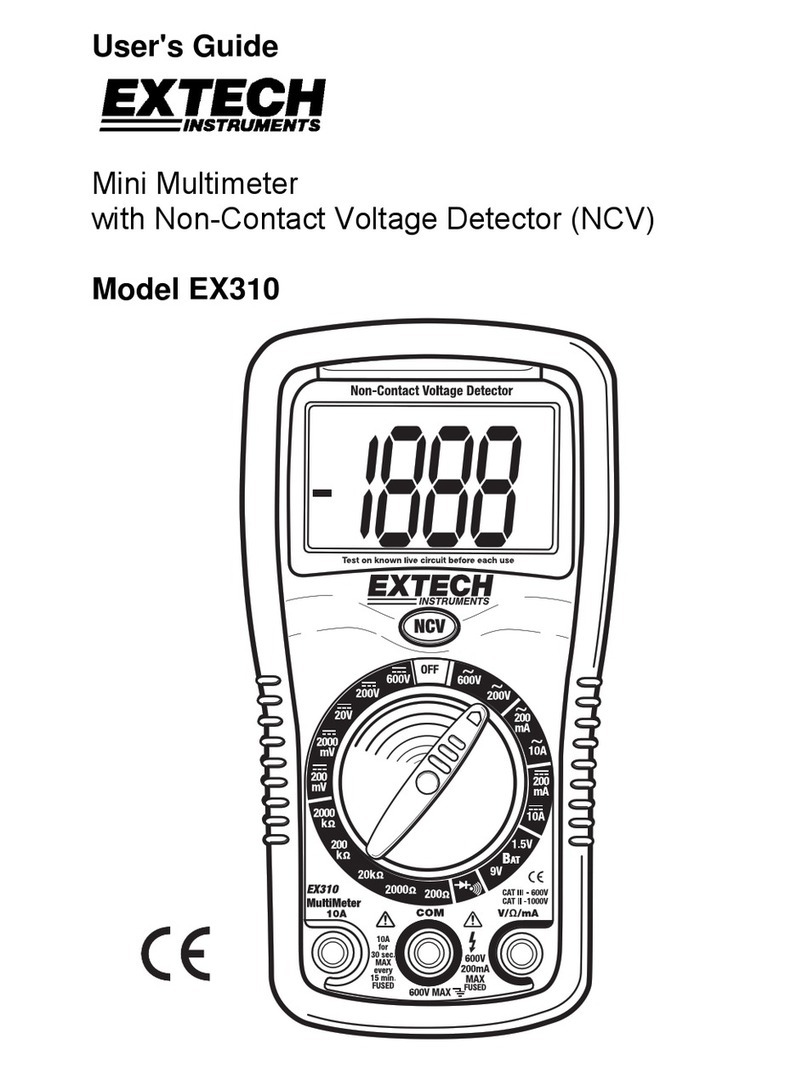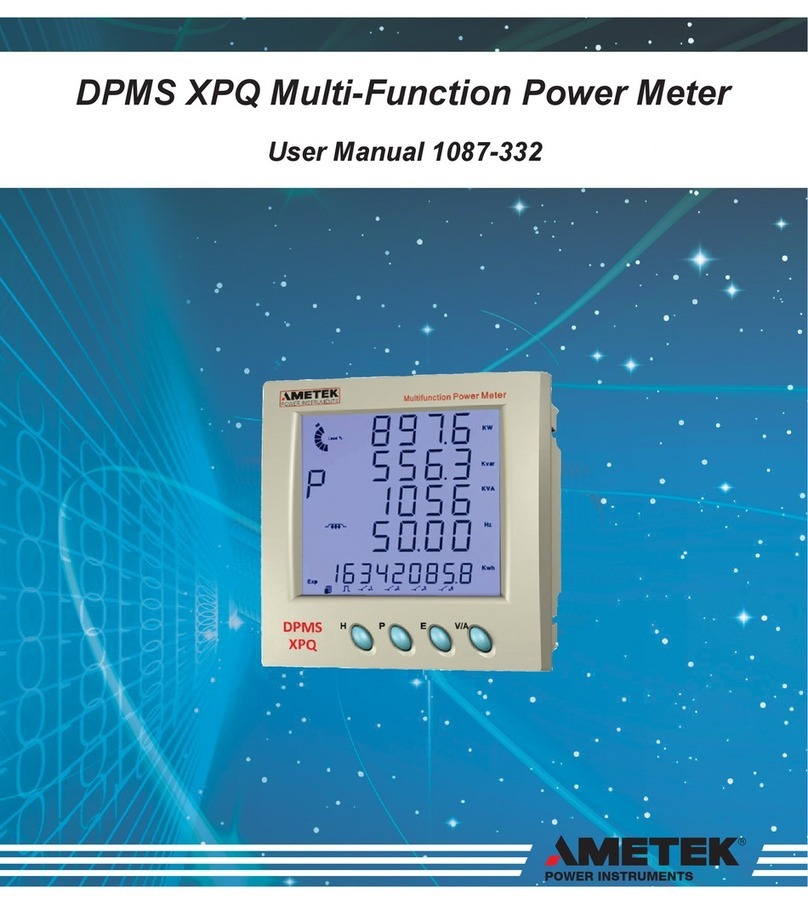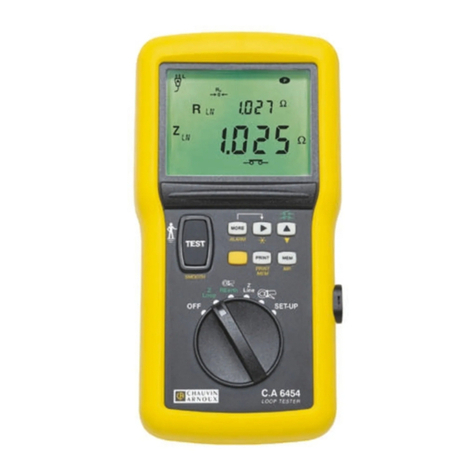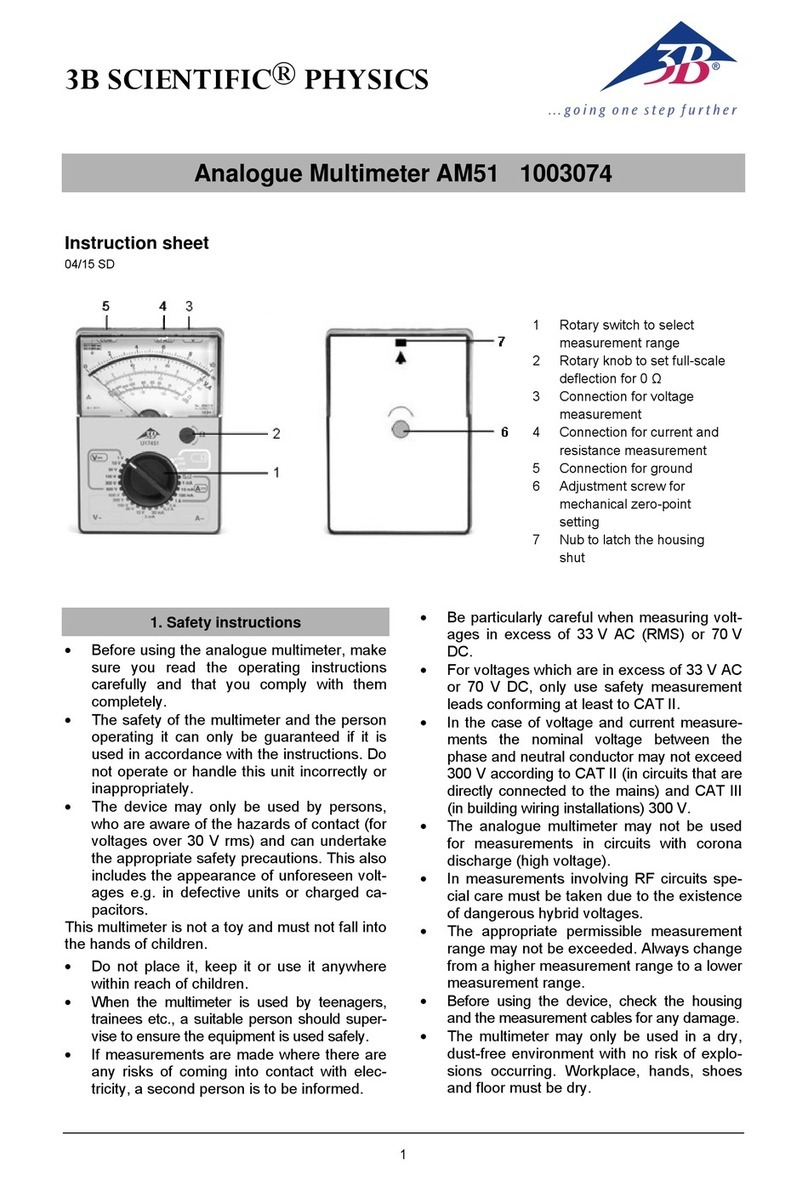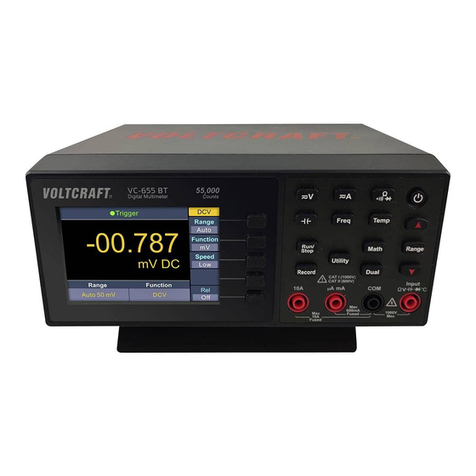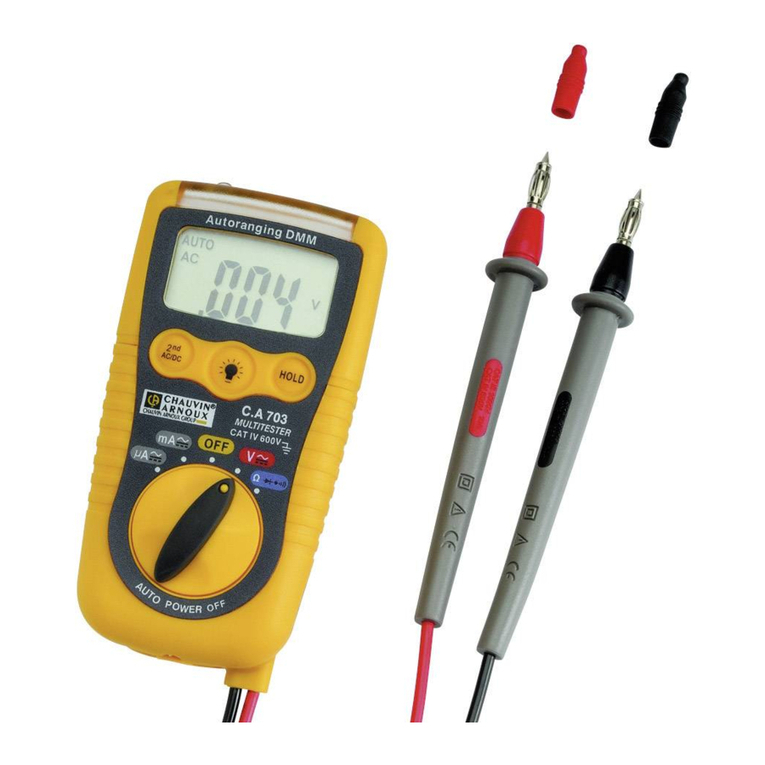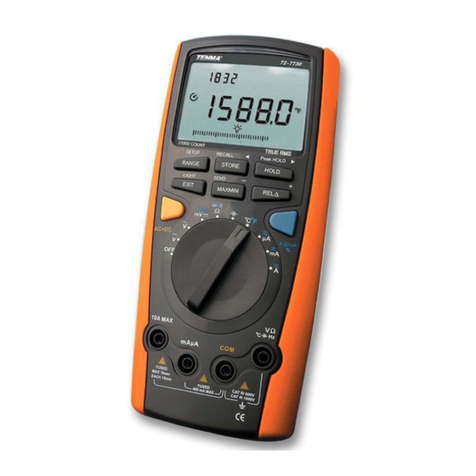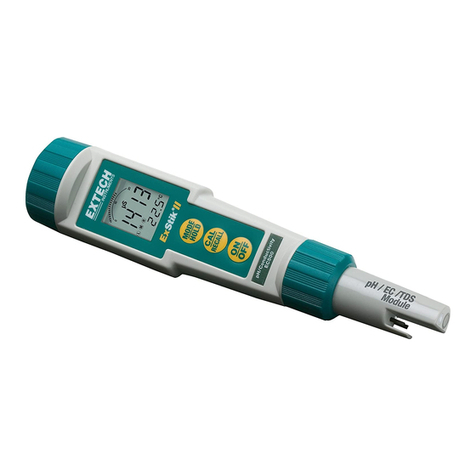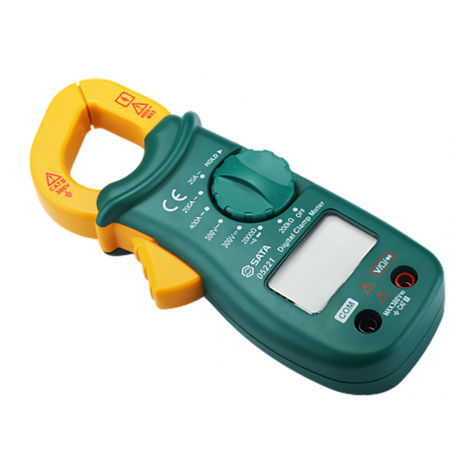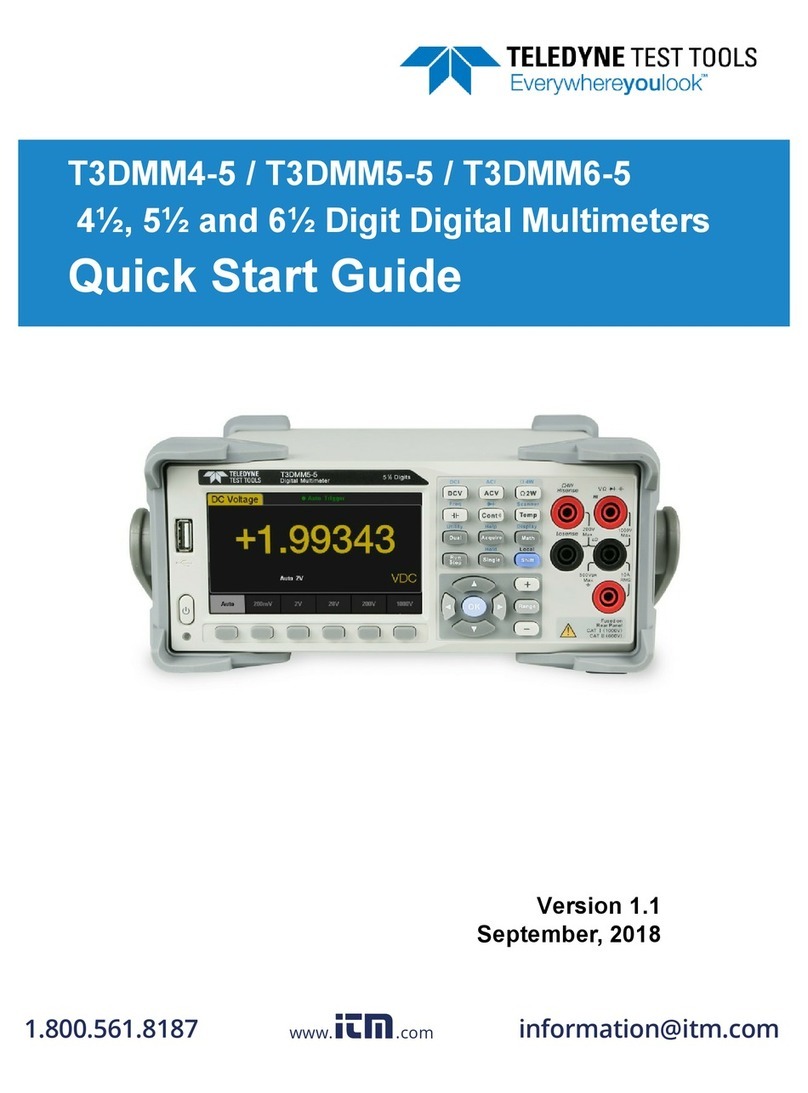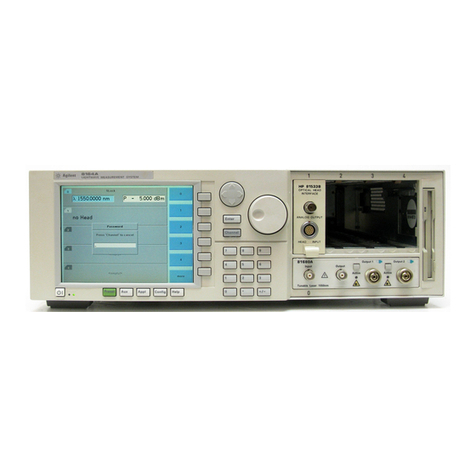ES TMX-589 User manual

True RMS Auto/Industrial
Multimeter CATIII 1000V
Model TMX-589
User Manual
member

1
CONTENTS
Introduction ..……………………………………………………………… 2
Safety Symbols .……………………………………………………………2
Saftey Instructions ………………………………………………………3-4
Spare Parts List…………………………………………………………… 4
Controls & Jacks……………………………………………………………5
LCD Symbols……………………………………………………………….6
Push-button Functions……………………………………………..…7-8
Mode Button…………………………………………………………………7
Data Hold …………………………………………………………………. 7
Range Button…………………….…………………………………………7
Rel Button……...……………………………………………………………7
Max/Min Button …………………………………………………………….8
Back Light Button ………………………………………………………….8
Operating Functions…………………………………………………9-14
DC Voltage(V)…………………………………………………………….. 9
AC Voltage (V)………………………………………………………….. 10
Non-Contact AC Voltage (V)………………………………………….. 10
AC/DC Current (A)………………………………………………………. 11
Resistance (Ω)……………………………………………………………12
Audible Continuity ( )……………………………………………………12
Diode Check( )…………………………………………………………13
Capacitance(CAP) ……………………………………………………… 13
Temperature (℃/ 0F)
……………………………………………………..14
Frequency (Hz)…………………………………………………………...14
Maintenance…………………………………………………………..15-16
Battery Installation……………………………………………………….. 15
Replacing the Fuses…………………………………………………… 16
Specifications……………………………………………………… 17-21
Trouble Shooting………………………………………………………… 21
Warranty Information…………………………………………………… 22

2
Introduction
This meter measures AC/DC Voltage, AC/DC Current, Resistance,
Capacitance, Frequency (electrical & electronic), Duty Cycle,
Frequency, Diode Test, Continuity and Thermocouple Temperature.
Proper use and care of this meter will provide many years of reliable
service.
Safety Symbols
This symbol adjacent to another symbol, terminal
or operating device indicates that the operator
must refer to an explanation in the Operating
Instructions to avoid personal injury or damage to
the meter.
This WARNING symbol indicates a potentially
hazardous situation, which if not avoided, could
result in death or serious injury.
This CAUTION symbol indicates a potentially haz-
ardous situation, which if not avoided, may result in
damage to the product.
This symbol advises the user that the terminal(s)
so marked must not be connected to a circuit point
at which the voltage with respect to earth ground
exceeds (in this case) 1000 VAC or VDC.
This symbol adjacent to one or more terminals
identifies them as being associated with ranges
that may, in normal use, be subjected to
particularly hazardous voltages. For maximum
safety, the meter and its test leads should not be
handled when these terminals are energized.
This symbol indicates that a device is protected
throughout by double insulation or reinforced
insulation.
WARNING
CAUTION
MAX
1000V

3
SAFETY INSTRUCTIONS
This meter has been designed for safe use, but must be operated with
caution. The rules listed below must be carefully followed for safe
operation.
1. NEVER apply voltage or current to the meter that exceeds the
specified maximum:
Input Protection Limits
Function
Maximum Input
V DC or V AC
1000VDC/AC rms
mA AC/DC
500mA 1000V fast acting fuse
A AC/DC
10A 1000V fast acting fuse (10A
for 30 seconds max every 15
minutes)
Frequency, Resistance,
Capacitance, Duty Cycle,
Diode Test, Continuity
1000VDC/AC rms
Temperature
1000VDC/AC rms
2. USE EXTREME CAUTION when working with high voltages.
3. DO NOT measure voltage if the voltage on the "COM" input jack
exceeds 1000V above earth ground.
4. NEVER connect the meter leads across a voltage source while the
function switch is in the current, resistance, or diode mode. Doing
so can damage the meter.
5. ALWAYS discharge filter capacitors in power supplies and
disconnect the power when making resistance or diode tests.

4
6. ALWAYS turn off the power and disconnect the test leads before
opening the covers to replace the fuse or batteries.
7. NEVER operate the meter unless the back cover and the battery
and fuse covers are in place and fastened securely.
If the equipment is used in a manner not specified by the
manufacturer, the protection provided by the equipment may be
impaired.
NOTE: Ghost Voltage - On some low AC and DC voltage ranges,with
the test leads not connected to a device, the display may show a
random, changing reading. This is normal and is caused by the high-
input sensitivity. The reading will stabilize and give a proper
measurement when connected to a circuit.
SPARE PARTS LIST
#608 Replacement Test Leads CATIII 1000V
#637 Replacement Temperature Probe Bead Style
#671 Replacement Fuse 10A –1000V
#672 Replacement Fuse 0.5A –1000V
For other spare parts, please call 800-227-1603 or email your request
to info@esitest.com.

5
CONTROLS AND JACKS
1.
4,000 count LCD display
2. HOLD button
3. RANGE button
4. MODE button
5. Function switch
6. mA/µA and 10A input jacks
7. COM input jack
8. Positive input jack
9. Backlight button
10. MAX/MIN button
11. REL button
NOTE: Tilt stand and battery compartment are on rear of unit.

6
LCD SYMBOLS
•))) Continuity
Diode test
Battery status
n Nano (10-9) (capacitance)
µMicro (10-6) (amps, cap)
m Milli (10-3) (volts, amps)
A Amps
k Kilo (103) (ohms)
F Farads (capacitance)
M Mega (106) (ohms)
ΩOhms
Hz Hertz (frequency)
REL Relative
V Volts
AC Alternating current
DC Direct current
ºF Degrees Fahrenheit ºC Degrees Centigrade
MAX Maximum MIN Minimum
AUTO Auto-Range APO Auto Power-Off
HOLD Display hold

7
PUSH-BUTTON FUNCTIONS
MODE BUTTON
Selects AC or DC measurement when in Volts, Amps, mA or uA
functions. Also used to select between Ω, or •))) when in
the Ohm, Diode and Continuity function.
HOLD
Press the HOLD button and the reading will freeze on the display.
Press the button again and the frozen reading displayed will return
to normal measurement status.
RANGE button
When the meter is first turned on, it automatically goes into Auto-
Ranging mode. This automatically selects the best range for the
measurements being made and is generally the best mode for most
measurements. For situations requiring the test range to be
manually selected, perform the following:
Press the RANGE button. The “Auto Range” display indicator will
turn off, The “Manual Range” display indicator will turn on.
Press the RANGE button to step through the available testing
ranges until you select the test range desired.
Press and hold the RANGE button for 2 seconds to exit the Manual
Ranging mode and return to Auto-Ranging.
MAX/MIN BUTTON
The MAX/MIN function allows the meter to capture the highest or
lowest measurement for later reference.
Press the MAX/MIN button to begin measurement. The indicator
MAX or MIN will appear in the display. While in MAX mode, the
meter high reading will be captured and held on the display. While
in MIN mode, the low reading will be captured and held on the
display.

8
If the MAX MIN message is flashing, the instrument is in MAX/MIN
mode but not recording. Press the MAX/MIN button to select a
mode.
To return to normal AUTO measurement mode, hold down the
MAX/MIN button for 2 seconds.
PEAK BUTTON
The Peak Hold function captures the peak AC or DC voltage or
current. The meter can capture negative or positive peaks as fast as
1 millisecond in duration.
Set the function switch to the Amps or Volts.
Press and Hold the PEAK button until “CAL” appears in the display.
This procedure will zero the range selected & the meter will go into
manual ranging mode.
Press the PEAK button, Pmax will display.The display will update
each time a higher positive peak occurs.
Press the PEAK button again, Pmin will display. The display will now
update and indicate the lowest negative peak.
To return to normal operation, press and hold the PEAK button until
the Pmin or Pmax indicator switches off.
Note: If the Function switch position is changed after a calibration the
Peak Hold calibration must be repeated for the new function selected.
The relative change feature allows you to make measurements
relative to a stored reference value. A reference Voltage, Current,
etc., is stored and measurements are made in comparison to that
value. The displayed value is the difference between the reference
value and the measured value.
BACKLIGHT BUTTON
Press the BACKLIGHT button to turn on the display back lighting.
Press BACKLIGHT button again to exit the back light mode.

9
OPERATING INSTRUCTIONS
WARNING: Risk of electrocution. High-voltage circuits, both AC and
DC,are very dangerous and should be measured with great care.
1. ALWAYS turn the function switch to the OFF position when the
meter is not in use.
2. If “OL”appears in the display during a measurement, the value
exceeds the range you have selected. Change to a higher range.
DC VOLTAGE MEASUREMENTS
CAUTION: Do not measure DC voltages if a motor on the circuit is
being switched ON or OFF. Large voltage surges may occur that
can damage the meter.
1. Set the function switch to the V position.
2. Insert the black test lead banana plug into the
negative COM jack.
Insert the red test lead banana plug into the
positive Vjack.
3. Touch the black test probe tip to the negative
side of the circuit.
Touch the red test probe tip to the positive side
of the circuit.
4. Read the voltage on the display.

10
AC VOLTAGE MEASUREMENTS
CAUTION: Do not measure AC voltages if a motor on the circuit is
being switched ON or OFF. Large voltage surges may occur that
can damage the meter.
1. Set the function switch to the Vposition.
2. Press the MODE button to indicate “AC”.
3. Insert the black test lead banana plug into
the negative COM jack.
Insert red test lead banana plug into the
positive Vjack.
4. Touch the black test probe tip to the neutral
side of the circuit.
Touch the red test probe tip to the“hot” side
of the circuit.
5. Read the voltage on the display
Non-Contact AC Voltage Detection
1. Set the function switch to the V position.
2. Place the top end of the multimeter at the hot conductor or at the
hot side/front of the electrical outlet.
If AC voltage is present, the detector light will illuminate.
NOTE: The conductors in electrical cord sets are often twisted. For
best results, run the top end of the DMM along a length of the cord to
to assure that the sensor is in close proximity to the live conductor.
NOTE: The detector is designed with high sensitivity. Static electricity
or other sources of energy may randomly trip the sensor. This is
normal.
AC/DC CURRENT MEASUREMENTS
WARNING: Risk of Electrocution. Before use, always test the non-
contact Voltage Detector on a known live circuit to verify proper
operation.
WARNING: In cases where the test results are not definite or you
have any doubt, always assume that the AC Voltage is present.

11
CAUTION: Do not make 10A current measurements for longer than
30 seconds. Exceeding 30 seconds may cause damage to the
meter and/or the test leads.
1. Insert the black test lead banana plug into the
negative COM jack.
2. For current measurements up to 4000µA
AC/DC, set the function switch to the µA
position and insert the red test lead banana
plug into the µA/mA jack and press mode
button to select AC or DC.
3. For current measurements up to 400mA
AC/DC, set the function switch to the mA
position and insert the red test lead banana
plug into the µA/mA jack and press mode
button to select AC or DC.
4. For current measurements up to 10A AC/DC,
set the function switch to the 10A position and insert the red test
lead banana plug into the 10A jack and press mode button to
select AC or DC.
5. Remove power from the circuit under test, then open up the
circuit at the point where you wish to measure current.
6. Touch the black test probe tip to the negative side of the circuit.
Touch the red test probe tip to the positive side of the circuit.
7. Apply power to the circuit.
8. Read the current on the display.
RESISTANCE MEASUREMENTS

12
WARNING: To avoid electric shock, disconnect power to the unit
under test and discharge all capacitors before taking any
resistance measurements. Remove the batteries and unplug the
line cords.
1. Set the function switch to the Ωposition.
2. Insert the black test lead banana plug into
the negative COM jack.
Insert the red test lead banana plug into the
positive Ωjack.
3. Press the MODE button to indicate “Ω”on the
display.
4. Touch the test probe tips across the circuit
or part under test. It is best to disconnect
one side of the part under test so the rest of
the circuit will not interfere with the
resistance reading.
5. Read the resistance on the display.
CONTINUITY CHECK
WARNING: To avoid electric shock, never measure continuity on
circuits or wires that have live voltage passing through them.
1. Set the function switch to the
Ωposition.
2. Insert the black lead banana plug into the
negative COM jack.
Insert the red test lead banana plug into the
positive Ωjack.
3. Press the MODE button to indicate“ " on the
display
4. Touch the test probe tips to the circuit or wire
you wish to check.
5. If the resistance is less than approximately
35Ω, the audible signal will sound. If the

13
circuit is open, the display will indicate “OL”.
DIODE TEST
1. Set the function switch to the Ωposition.
2. Insert the black test lead banana plug into the
negative COM jack and the red test lead
banana plug into the positive Vjack.
3. Press the MODE button to indicate“ “ and “V”
on the display.
4. Touch the test probes to the diode under test.
Forward voltage will typically indicate 0.400 to
0.700V. Reverse voltage will indicate “OL”.
Shorted devices will indicate near 0V and an
open device will indicate “OL” in both polarities.
CAPACITANCE MEASUREMENTS
WARNING:To avoid electric shock, disconnect power to the unit
under test and discharge all capacitors before taking any
capacitance measurements. Remove the batteries and unplug
the line cords.
1. Set the rotary function switch to the
CAP position.
2. Insert the black test lead banana plug
into the negative COM jack.
3. Insert the red test lead banana plug into
the positive CAP jack.
4. Touch the test leads to the capacitor to
be tested.
5. Read the capacitance value on the
display
TEMPERATURE MEASUREMENTS

14
1. Set the function switch to the ºC or ºF
position.
2. Insert the Temperature Probe into the
positive ºF & negative Com input jacks,
making sure to observe the correct
polarity.
3. Touch the Temperature Probe head to
the surface you wish to measure.
Keep the probe touching the surface
under test until the reading
stabilizes (about 30 seconds).
4. Read the temperature on the display.
NOTE:The temperature probe is fitted with a type K mini connector.
A mini connector to banana connector adaptor is supplied for
connection to the input banana jacks.
FREQUENCY (Hz) MEASUREMENTS
1. Set the rotary function switch to the Hz position.
2. Insert the black lead banana plug into the
negative COM jack and the red test lead
banana plug into the positive Hz% jack.
3. Touch the test probe tips to the circuit under test.
4. Read the frequency on the display.
Maintenance

15
WARNING: To avoid electric shock, disconnect the test leads from
any source of voltage before removing the back cover or the battery
or fuse covers.
WARNING:To avoid electric shock, do not operate your meter until
the battery and fuse covers are in place and fastened securely.
This Multimeter is designed to provide years of dependable service, if the
following care instructions are performed:
1. KEEP THE METER DRY. If it gets wet, wipe it off.
2. USE AND STORE THE METER IN NORMAL TEMPERATURES.Extreme temperatures can
shorten the life of the electronic parts and distort or melt plastic parts.
3. HANDLE THE METER GENTLY AND CAREFULLY.Dropping it can damage the
electronic parts or the case.
4. KEEP THE METER CLEAN.Wipe the case occasionally with a damp cloth. DO
NOT use chemicals, cleaning solvents, or detergents.
5. USE ONLY FRESH BATTERIES OF THE RECOMMENDED SIZE AND TYPE.Remove old or
weak batteries so they do not leak and damage the unit.
6. IF THE METER IS TO BE STORED FOR A LONG PERIOD OF TIME, the batteries should be
removed to prevent damage to the unit.
BATTERY INSTALLATION
WARNING: To avoid electric shock, disconnect the test leads from any
source of voltage before removing the battery cover.
1. Turn power off and disconnect the test leads from the meter.
2. Open the rear battery cover by removing two screws (B) using a
Phillips head screwdriver.
3. Insert the batteryinto battery holder, observing the correct polarity.
4. Put the battery cover back in place. Secure with the screws.
WARNING: To avoid electric shock, do not operate the meter until
the battery cover is in place and fastened securely.

16
NOTE: If your meter does not work properly, check the fuses and batteries to
make sure that they are still good and that they are properly inserted.
REPLACING THE FUSES
WARNING: To avoid electric shock, disconnect the test leads from
any source of voltage before removing the rear cover (fuse door).
1. Disconnect the test leads from the meter and any item under test.
2. Remove rear cover by loosening the 6 screws (A) with a Phillips
head screwdriver. Lift rear cover away from the front half. Battery
cover does not need to be removed.
3. Remove the old fuse from its holder by gently pulling it out.
4. Install the new fuse into the holder.
Always use a fuse of the proper size and value (0.5A/1000V Ceramic
fast blow for the 400mA range, 10A/1000V Ceramic fast blow for the
10A range).
5. Put the fuse door back in place. Insert the screw and tighten it
securely.
WARNING: To avoid electric shock, do not operate your meter until
the fuse door is in place and fastened securely.
NOTE: If your meter does not work properly, check the fuses and batteries to
make sure that they are still good and that they are properly inserted.
SPECIFICATIONS
AA
A
B
B
F1 F2

17
DC VOLTAGE (AUTO-RANGING)
Range
Resolution
Accuracy
400.0mV
0.1mV
4.000V
1mV
40.00V
10mV
400.0V
100mV
+1.2% of rdg +2 digits
1000V
1V
+1.5% of rdg +2 digits
Input Impedance: 10MΩ.
Maximum Input: 1000V dc or 1000V ac rms.
AC VOLTAGE (AUTO-RANGING)
Range
Resolution
Accuracy
400.0mV
0.1mV
4.000V
1mV
40.00V
10mV
400.0V
100mV
+1.5%of rdg + 8 digits
1000V
1V
+1.5%of rdg +8 digits
All AC voltage ranges are specified from 5% of range to 100% of
range. Input Impedance: 10MΩ.
AC Response: 50 Hz to 400Hz
Maximum Input: 1000V dc or 1000V ac rms.
DC CURRENT (AUTO-RANGING)
Range
Resolution
Accuracy
400.0uA
0.1uA
4000uA
1uA
40.00mA
10uA
400.0mA
100uA
+1.2%of rdg + 5 digits
10A
10mA
+1.5%of rdg + 5 digits
Overload Protection: FF500mA / 1000V and F10A / 1000V Fuse.
Maximum Input: 4000uA dc on uA range
400mA dc on mA range
10A dc on 10A range.
AC CURRENT (AUTO-RANGING)
Range
Resolution
Accuracy
400.0uA
0.1uA

18
4000uA
1uA
40.00mA
10uA
400.0mA
100uA
+1.5% of rdg +5 digits
10A
10mA
+1.8% of rdg +5 digits
All AC Current ranges are specified from 5% of range to 100% of
range
Overload Protection: FF500mA/1000V and F10A/1000V Fuse.
AC Response: 50 Hz to 400 Hz
Maximum Input: 4000uA ac rms on uA
400mA ac rms on mA
10A ac rms on 10A range.
RESISTANCE [Ω] (AUTO-RANGING)
Range
Resolution
Accuracy
400.0Ω
0.1Ω
+1.2% of rdg +5 digits
4.000kΩ
1Ω
40.00kΩ
10Ω
400.0kΩ
100Ω
+1.2% of rdg +2 digits
4.000MΩ
1kΩ
40.00MΩ
10kΩ
+2.5% of rdg +8digits
Input Protection: 1000V dc or 1000V ac rms.
CAPACITANCE (AUTO-RANGING)
Range
Resolution
Accuracy
40.00nF
10pF
+5.0% of rdg +7 digits
400.0nF
0.1nF
4.000uF
1nF
40.00uF
10nF
400.0uF
0.1uF
+3.0% of rdg +5 digtis
4.000mF
1uF
40.00mF
10 uF
+5.0% of rdg +7 digits
Input Protection: 1000V dc or 1000V ac rms.
FREQUENCY (AUTO-RANGING)
Range
Resolution
Accuracy
4.000Hz
0.001Hz

19
40.00 Hz
0.01Hz
400.0 Hz
0.1Hz
4.000KHz
1Hz
40.00kHz
10Hz
400.0kHz
100Hz
+1.0% of rdg +3 digits
10.00MHz
1kHz
+1.2% of rdg +4 digits
Sensitivity: >0.5V RMS while ≤1MHz ;
Sensitivity: >3V RMS while >1MHz ;
Input Protection: 1000V dc or 1000V ac rms.
TEMPERATURE
Range
Resolution
Accuracy
-20
o
C~+760
o
C
1
o
C
+3% of rdg +5 digits
-4
o
F~+1400
o
F
1
o
F
+3% of rdg +8 digits
Sensor: Type K Thermocouple
Overload protection: 1000V dc or ac rms..
DIODE TEST
Test current
Resolution
Accuracy
1Ma typical/Open
MAX.3V
1 mV
+10% of rdg +5 digits
Open circuit voltage: MAX. 3V dc
Overload protection: 1000V dc or ac rms.
AUDIBLE CONTINUITY
Audible threshold: Less than 35ΩTest current MAX. 1.5mA
Overload protection: 1000V dc or ac rms.
Enclosure Double molded, waterproof
Shock (Drop Test) 6.5 feet (2 meters)
Diode Test Test current of 0.9mA maximum, open
circuit voltage 2.8V DC typical
Table of contents


